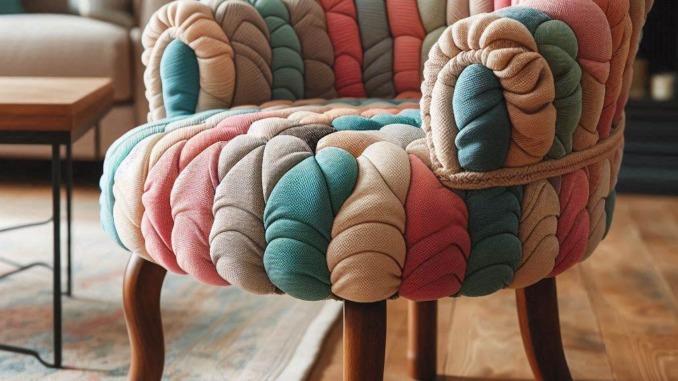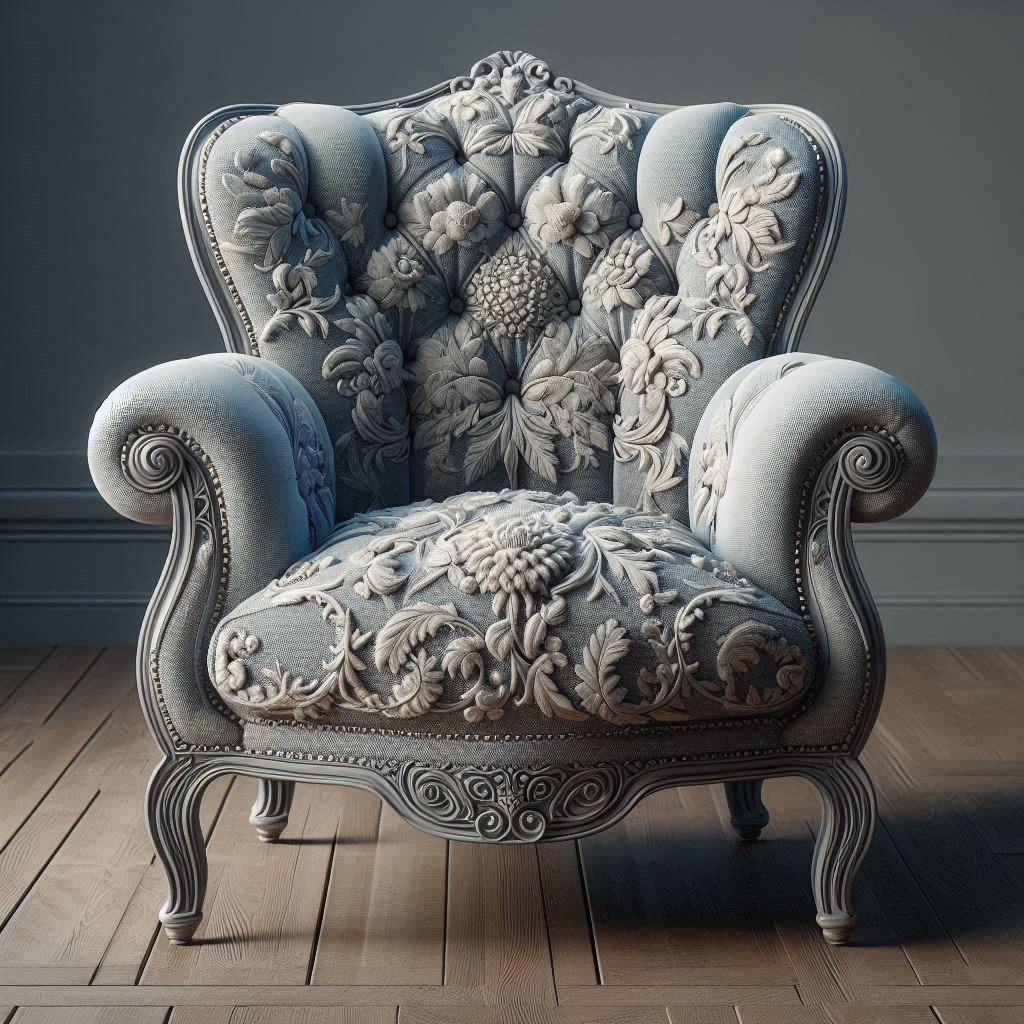
How to Make a Slipcover for a Chair?
Are you looking to give your old chair a fresh new look? Or maybe you want to protect your favorite seat from everyday wear and tear? Whatever your reason, learning how to make a slipcover for a chair is a valuable skill that can save you money and let you express your creativity. In this guide, we’ll walk you through the process step by step, from measuring your chair to adding those final touches that make your slipcover uniquely yours.
Quick Answer
To make a slipcover for a chair, measure your chair, choose and pre-wash your fabric, create a pattern, cut the fabric, pin and sew the pieces together, and fit the slipcover to your chair. Add finishing touches like ironing and decorative elements for a polished look.
A Stitch in Time: My Slipcover Story
Before we dive into the nitty-gritty, let me share a quick story. Last summer, I inherited my grandma’s old wingback chair. It had seen better days, with faded fabric and a few worn spots, but it was still comfy as ever. I couldn’t bear to part with it, but it stuck out like a sore thumb in my living room. That’s when I decided to try my hand at making a slipcover.
I’ll be honest – my first attempt was a bit of a disaster. I ended up with a lumpy mess that looked more like a poorly wrapped gift than a chair cover. But I didn’t give up. After some research, a few YouTube tutorials, and a lot of practice, I finally got it right. Now, that old chair is the star of my living room, and I’ve got a new skill under my belt. Trust me, if I can do it, so can you!
Getting Started: What You’ll Need

Before we jump in, let’s gather our supplies. Here’s what you’ll need to make your slipcover:
- Fabric (we’ll figure out how much in a bit)
- Measuring tape
- Scissors (fabric scissors work best)
- Lots of pins
- Thread that matches your fabric
- A sewing machine (or a lot of patience for hand-sewing)
- An iron and ironing board
- Chalk or a fabric marker
- Pattern paper (optional, but helpful)
Step 1: Size Up Your Chair
First things first – we need to know what we’re working with. Grab your measuring tape and let’s size up that chair!
Measurements to Take
- Seat: Width from side to side, depth from front to back, and height from the floor to the top of the cushion
- Back: Height from the seat to the top, width across the widest part
- Arms: Height from the seat to the top of the arm, width from front to back
- Overall: Height from floor to the highest point, width at the widest point, depth from front to back
Here’s a handy table to jot down your measurements:
| Chair Part | Width | Height | Depth |
|---|---|---|---|
| Seat | |||
| Back | |||
| Arms | |||
| Overall |
Pro tip: Add an extra 1-2 inches to each measurement for seam allowances and wiggle room. Better to have a little extra than not enough!
Step 2: Fabric Hunting
Now for the fun part – choosing your fabric! This is where you get to let your personality shine. But before you get carried away with patterns and colors, there are a few things to keep in mind:
Fabric Considerations
- Durability: Choose a fabric that can stand up to daily use. Medium to heavyweight fabrics like cotton duck, denim, or upholstery-grade fabrics are good choices.
- Washability: Unless you want to make trips to the dry cleaner, pick a fabric that’s machine washable.
- Pattern: Solid colors are easier to work with for beginners. If you’re set on a pattern, choose one that doesn’t need to be matched at the seams.
- Stretch: A bit of stretch can be forgiving and help your slipcover fit snugly.
Once you’ve chosen your fabric, make sure to pre-wash it. This step is super important! It’ll prevent your slipcover from shrinking after you’ve done all that hard work.
Step 3: Creating Your Pattern
Now, we could just start cutting into our fabric, but trust me, making a pattern first will save you a lot of headaches (and fabric waste).
Pattern-Making Options
- The Pinning Method: Drape an old sheet or muslin over your chair and pin it to fit each section. Cut along the pins and use these pieces as your pattern.
- The Paper Method: Use large sheets of paper (butcher paper works great) to create pattern pieces for each section of the chair.
- The Existing Cover Method: If your chair already has a removable cover, you can carefully take it apart and use those pieces as a pattern.
Whichever method you choose, remember to label each piece (e.g., “seat front,” “left arm”) and mark which direction the fabric should face.
Step 4: Cutting Your Fabric
Alright, deep breath – it’s time to cut into that beautiful fabric you chose. Here’s how to do it right:
- Lay your fabric out on a large, flat surface. A clean floor works if you don’t have a big enough table.
- Arrange your pattern pieces on the fabric. If your fabric has a pattern or nap, make sure all pieces are facing the same direction.
- Pin your pattern pieces to the fabric.
- Carefully cut around each piece, leaving about a 1/2 inch seam allowance.
- Mark any notches or important points from your pattern onto the fabric pieces.
Remember: Measure twice, cut once! Double-check everything before you make that first snip.
Step 5: Sewing It All Together
Now comes the part where your slipcover starts to take shape. Don’t worry if you’re not a sewing whiz – we’ll take it step by step.
Sewing Steps
- Start with the seat: Sew the seat piece to the front skirt piece.
- Add the back: Attach the back piece to the seat/skirt combo.
- Tackle the arms: Sew the arm pieces, then attach them to the seat and back.
- Side panels: Add the side panels to connect the arms to the skirt.
- Finish the skirt: Hem the bottom edge of the skirt.
Sewing tip: Use pins generously to hold pieces in place as you sew. And don’t forget to backstitch at the beginning and end of each seam for extra strength!
Step 6: The Moment of Truth – Fitting Your Slipcover
You’ve measured, cut, and sewn – now it’s time to see how it all comes together. Here’s how to fit your slipcover:
- Turn your slipcover right side out.
- Carefully pull it over your chair, starting from the top.
- Smooth out any wrinkles and tuck in any excess fabric.
- Check for any areas that are too tight or too loose.
- If needed, pin problem areas and make adjustments.
Don’t be discouraged if it’s not perfect on the first try. It might take a few tweaks to get it just right.
Step 7: Adding the Finishing Touches
You’re in the home stretch! Here are some final steps to make your slipcover look polished and professional:
- Press it: Give your slipcover a good ironing to get rid of any wrinkles.
- Add closures: Consider adding ties, velcro, or buttons to keep your slipcover in place.
- Decorative elements: Try adding piping to the seams or decorative buttons for extra flair.
Troubleshooting Common Issues
Even with careful planning, you might run into a few hiccups. Here are some common problems and how to fix them:
- Slipcover is too loose: Take it in at the seams or add darts for a snugger fit.
- Fabric bunches or wrinkles: Try using fabric weights or adding ties to secure it in place.
- Seams don’t line up: Unpick the problematic seam and re-pin before sewing again.
Caring for Your Slipcover
To keep your new slipcover looking great:
- Follow the washing instructions for your fabric.
- Spot clean spills immediately to prevent stains.
- Iron or steam your slipcover periodically to keep it crisp.
Wrapping It Up
Congratulations! You’ve just made a custom slipcover for your chair. Not only have you given your furniture a fresh new look, but you’ve also picked up a valuable DIY skill. Remember, practice makes perfect, so don’t be afraid to try again if your first attempt isn’t quite what you hoped for.
Now, step back and admire your handiwork. That chair isn’t just a piece of furniture anymore – it’s a testament to your creativity and determination. So go ahead, grab a good book, and settle into your newly slipcovered chair. You’ve earned it!
Next Steps
Feeling inspired? Why stop at one chair? Try making slipcovers for your other furniture pieces, or even experiment with seasonal covers to change up your decor throughout the year. The possibilities are endless!
Remember, every great DIYer started somewhere. So whether your first slipcover is picture-perfect or a little wonky, be proud of what you’ve accomplished. Here’s to many more successful projects in your future!


Leave a Reply